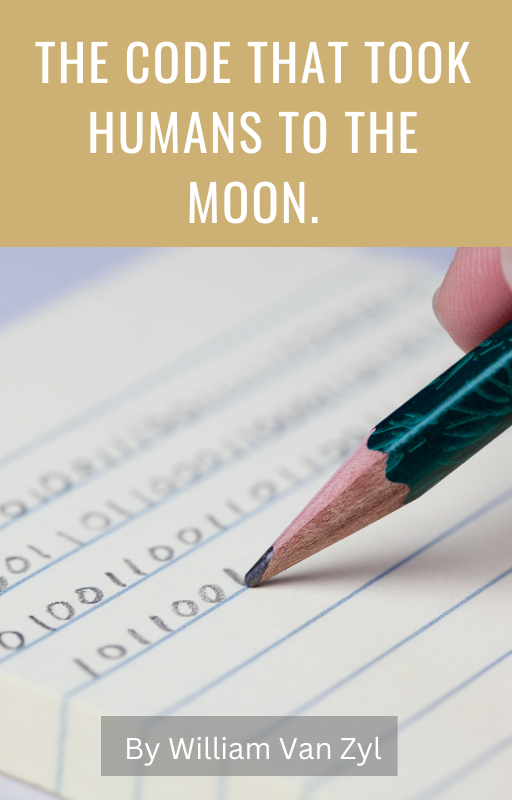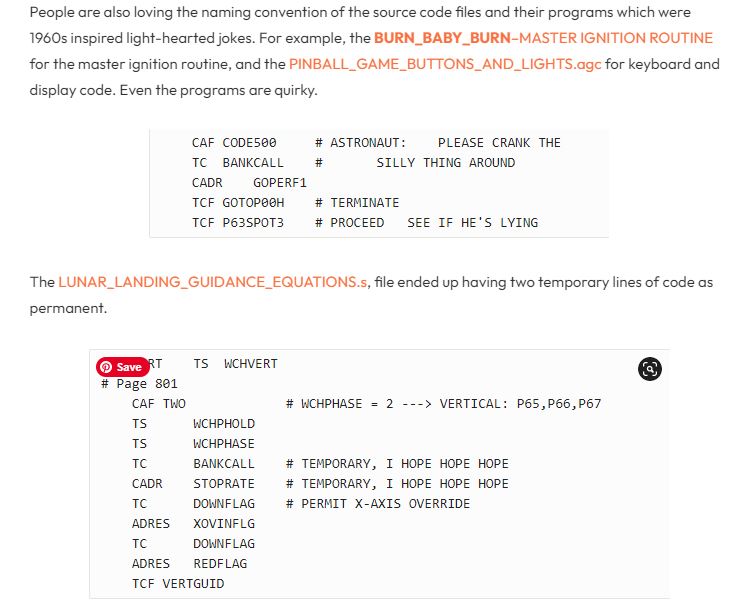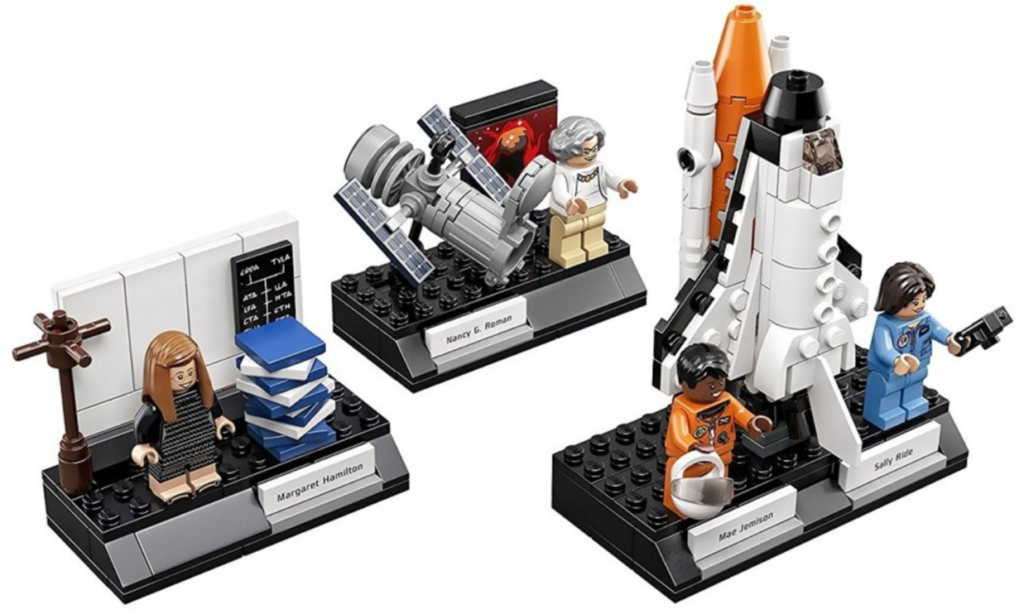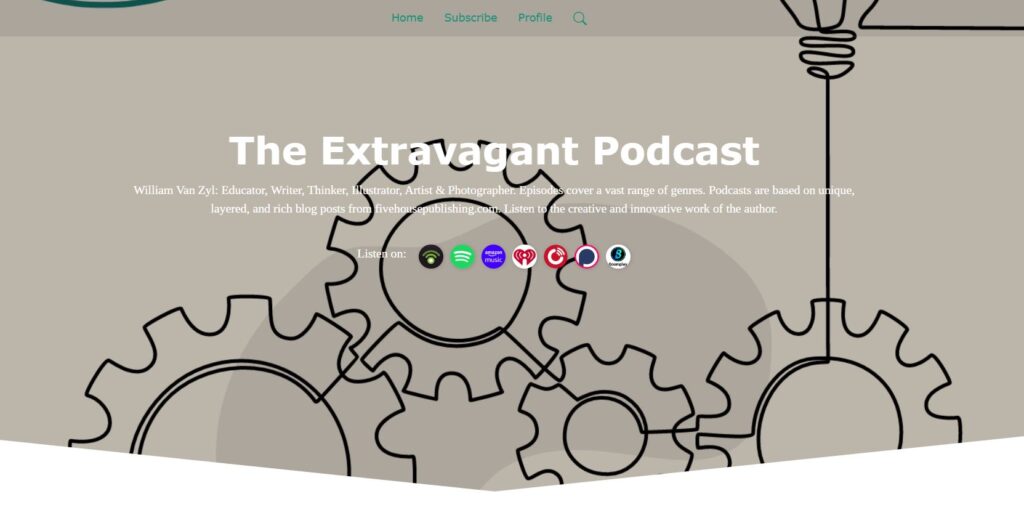
By William Van Zyl
Published December, 23 2022
You may also want to listen to the podcast: https://www.podbean.com/ew/pb-ip6bf-134ce5d
————————-0—————————-

Margaret Hamilton – ‘A small step for a woman, and a huge leap for ‘software engineering’
“Five minutes before landing.”
“Three minutes before landing,” said the leader of the mission. All eyes were fixated on the large black-and-white screen.
“Houston, we have a problem!”
“What! What is the problem?”
“Listen to the alarm. We think it is the onboard computer.”
Margaret Hamilton moved closer to the screen. She had her large heavy laptop open. Her computer stored over 600,000 lines of code. Behind her was a stack of handwritten computer codes on size A3 paper. The stack was as tall as Hamilton herself. About 1.7 m high.
She ran to the stack. She grabbed volume 17 – right at the top, and opened it on page 95.
“We think it is the radar system,” said the astronaut.
“I have thought about all sorts of interferences. I have programmed the computer to recognise such an error. The software’s priority scheduling would complete high-priority tasks first — like preparing for landing. The code that has been written will ignore lower-priority ones.”
“Margaret, it seems to have settled now. I think your high-priority code kicked in! The alarms went off”
The ground crew sighed in relief.
“One minute before landing, all engines running.”
“The Eagle has landed!”
The ground crew – at NASA Mission Control Centre – and the 3 famous astronauts jumped for joy. Neil, Buzz and Michael were over the moon.
—————–0————————–
Did Margaret Hamilton write the code for the Apollo Moon landing?
The answer is Yes! She is far lesser known as Neil Armstrong – the first man on the Moon. However, she is the woman who helped them to get there. Margaret Hamilton and her team of software engineers at the MIT Instrumentation Laboratory wrote the sprawling code that made the mission possible.
I saw the great picture below of Margaret Hamilton standing next to a 1.7 m high pile of handwritten code on social media. Immediately an article popped into my head. I have written it for you.
Who is Margaret Hamilton? She is an American computer scientist and software engineer. She led the team who developed the software for the Apollo moon missions and the Skylab space station in the 1960s and 70s. Her code helped the 3 men to get to the moon – and back!
How many lines of code did she write for the Apollo?
There are 17 binders in the photo. Assuming the 17 piles (bound volumes) are 5″4′ (1.524 mm) in total (stacked on top of each other), they’re all code (not simulation) and applying Mike’s measurements, assuming 10 binders are Aurora-like and 7 are Luminary-like yields 14,500 code pages, about 660,000 code lines.
What software was used for the Apollo?
The Apollo Guidance Computer (AGC) was installed on board the Apollo 11 Command Module (CM) and Lunar Module (LM). The computer’s software was written in Assembly Language (or Assembler). Assembler is considered a low-level programming language as there are very few “plain language” type words (e.g. instructions) easily recognised by humans.

Hamilton’s work guided the remaining Apollo missions that landed on the moon and benefitted Skylab, the first U.S. space station, in the 1970s. NASA honoured Hamilton with the NASA Exceptional Space Act Award in 2003, acknowledging her contributions to software development and granting her the biggest financial prize the agency had ever awarded to one person until that time-$37,200.
On November 22, 2016, Hamilton received the Presidential Medal of Freedom from President Barack Obama for her work leading to the development of onboard flight software for NASA’s Apollo Moon missions. Credit Wikimedia.https://explorethearchive.com/female-coder-margaret-hamilton-watm
More about Margaret Hamilton:
Margaret Heafield Hamilton (born August 17, 1936) is an American computer scientist, systems engineer, and business owner. She was director of the Software Engineering Division of the MIT Instrumentation Laboratory, which developed onboard flight software for NASA’s Apollo program. She later founded two software companies—Higher Order Software in 1976 and Hamilton Technologies in 1986, both in Cambridge, Massachusetts.Hamilton has published more than 130 papers, proceedings, and reports, about sixty projects, and six major programs. She is one of the people credited with coining the term “software engineering“.
The Apollo 11 moon landing was about the astronauts, mission control, software and hardware all working together as a seamlessly integrated system. None of this would have been possible without the contributions of one engineer: Margaret Hamilton. Who was this pioneer? Matt Porter and Margaret Hamilton detail how a woman and her team launched the software that took mankind to the Moon.
View the full lesson: https://ed.ted.com/lessons/the-softwa…

Table of Contents
I include some lessons I have learned from coding:
- Everything living and non-living thing is encoded. For example, every plant and every animal – including humans – are encoded. I am referring to molecular structures, DNA and more. It also includes relational codes. Everything is interconnected and exists in harmony. For example, the balance of the food chain, reproduction systems, provision of food, and medication (e.g. birds self-medicate when they are sick), cats and dogs also self-medicate. There is a code – and intelligent design – behind everything we know. Who do you think is behind all the intelligent design?
- Most well-known man-made codes include: JavaScript, Python, C++, PHP, and Ruby. There are many more. However, I have only listed the 5 important ones. See the list of the code names that have been used to identify computer hardware and software products here: https://en.wikipedia.org/wiki/List_of_computer_technology_code_names
- The technologically advanced world that we live in will demand more knowledge of code in the future. For example: With the world’s population exploding and food resources dwindling, we must be smarter. We must use technology and every available piece of land to produce food – effectively. Sky forms are a possible solution. See the details in the article.
Title of the Article: Priorities for science to overcome hurdles thwarting the full promise of the ‘digital agriculture’ revolution. Journal of the Science of Food and Agriculture. Volume100, Issue14. Special Issue: Special Section: In honour of David Reid. November 2020. Pages 5083-5092.
Link: https://onlinelibrary.wiley.com/doi/full/10.1002/jsfa.9346
Interested in sky farming? Read more here – https://www.dezeen.com/tag/vertical-farms/
Interested in sky farming? Read more here – https://www.dezeen.com/tag/vertical-farms/
- We need to teach our young people code. A great place to start is with the microcontrollers namely the Microbit (Python) and Arduino (C++).
- Man also has a code to consult. The Bible. Many people believe it is encoded. For example, Isaac Newton – a famous scientist – believed that the Bible was encoded. He spent the last years of his life trying to decode or find the ‘hidden messages.’ He saw the codes, realised that everything is encoded, and concluded that The Creator – Elohim – had encoded everything. He is an Intelligent Designer. Think about the power of the Ten Commandments. It brings order and maintains order. What an intelligent code!
- King David also encoded his heart. How did he do that? I will tell you. David said: ‘I have hidden your word in my heart, that I might not sin against you.’ (Psalm 119:10-11). “Hiding” God’s Word in your heart means memorising and meditating on the Scriptures. God uses his Word — to speak to us and show us how we ought to live. To have a good and purposeful life, we must obey His Words. These are probably the best Words on the planet to keep in your heart.
Conclusion:
This article explored the code for the moon landing by Margaret Hamilton. We have also touched on coding in general (creation being encoded). Then, we explored Biblical Code. Lastly, we have looked at the future challenges we will face (e.g. Sky Farms), like providing food to the ever-increasing world population.
On the note of codes, Could I ask you a couple of questions?
- Are you code literate (e.g. Python, PHP, C++, Ruby, Java)?
- Have you ever changed a simple computer (microcontroller) code?
- Do you know Microbit and Arduino (microcontrollers)? Have you used it before?
- Do you believe it is important that we should teach all young people the basics of coding?
- Do you have a code by which you live? I am referring to a sort of personal philosophy you adhere to. I do – The Bible – the more I study and meditate on it – the more it becomes part of me. It makes me happy, it gives me peace, and it gives me purpose. It helps me not be influenced by every devastating thing that happens in the world today. It protects me, hedges me in, comforts me, and gives me hope and a future. By the way – comparing The Bible to Margaret Hamilton’s 1.7 meter-high stacked handwritten code for Apollo 11 – thank goodness the Bible is small and compact. And everyone can understand it. Written and translated into understandable languages. We can carry it in our hands.
- By the way, did you know that some people believe that the first 5 books of the Bible are encoded (hidden meanings and messages)? If it is true, what would we call the Bible Code? Maybe G+++ It could be suitable ( 3 x +++ = Trinity of God): Father, Son, and Holy Spirit.
Are you a student, a teacher, or a homeschooler? Here is a simple lesson based on this article. The goal is to understand the differences between code. Also, to use C++ in an Arduino Uno scenario.
LESSON: Code and the Arduino Uno – How to make an LED blink (use pin 13):
- Find simple examples of the 5 different computer codes mentioned here (Python, C++, PHP, Ruby, and Java).
- Take a screenshot of short and simple code and paste them into a Google Doc. Share with the teacher.
- Do some research. Comment on every code to explain how these codes are different to one another.
- Lastly, find the code that makes an LED blink using an Arduino Uno. Include the following in your search: ‘Code Arduino, make an LED blink, pin 13.’ This is what the image looks like for the simple circuit:
Link to this project (code): https://www.oreilly.com/library/view/environmental-monitoring-with/9781449328603/ch01s04.html
- Now create the circuit on TinkerCad Circuits. Take a screenshot and paste it into the Google Doc.
- Take an Arduino Uno in class, and plug it into your computer (you need to download the software – Arduino IDE – to your laptop or desktop). Create this simple circuit. Take a photo with your mobile phone of the Arduino and your computer screen. Email the photo to yourself and paste it into your Google Doc.
- Make sure your share your work with the teacher.
Activity: In your groups – in Minecraft Education – create the Moon Landing of 1969 (Apollo 11). Include some Minecraft code. Here is a video to inspire you.
For fun: Watch the brilliant Lego Movie of the Moon landing.
For the computer geeks: See the interview with Margaret on how the problem was solved just before Apollo 11 landed on the Moon.
Copyright © 2022 by William Van Zyl
The Code that took Humans to the Moon.
All rights reserved. This eBook/article or any portion
thereof may not be reproduced or used in any manner
without the publisher’s permission, except for using brief quotations in a book review.
Published by Five House Publishing (New Zealand)
First Publishing, December 23, 2022
More eBooks and articles are available at https://fivehousepublishing.com/
More about the author at http://williamvanzyl.com/
Podcasts:

https://feed.podbean.com/williamvzyl/feed.xml
https://williamvzyl.podbean.com/
Very informative blog post. Well written. Margaret Hamilton is inspiring!